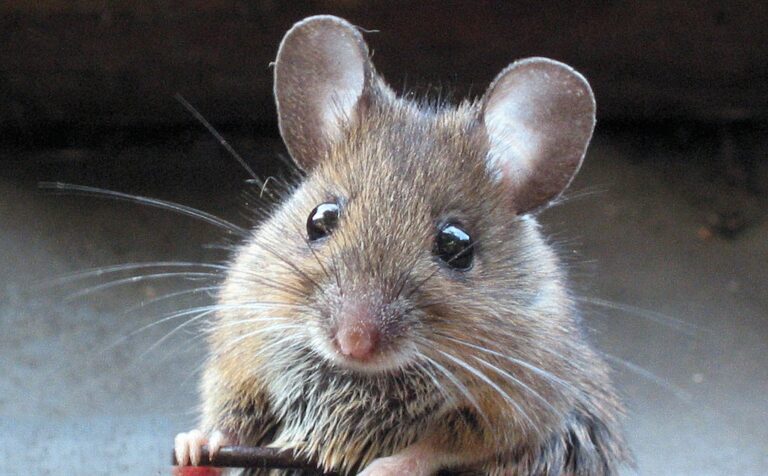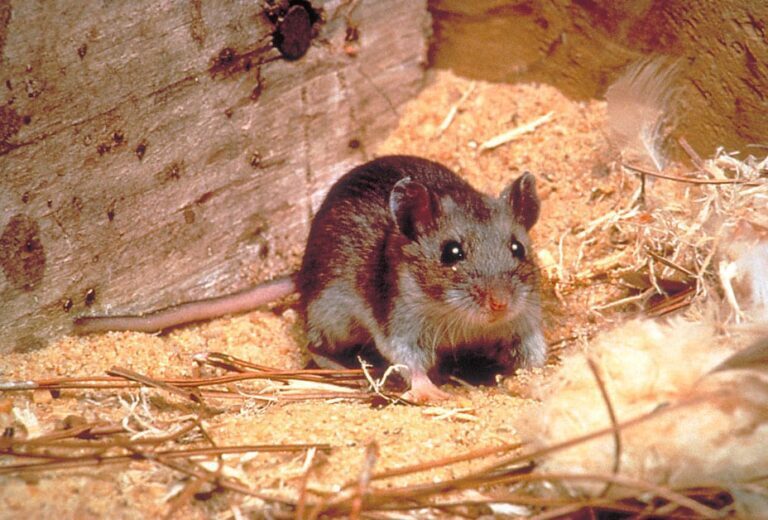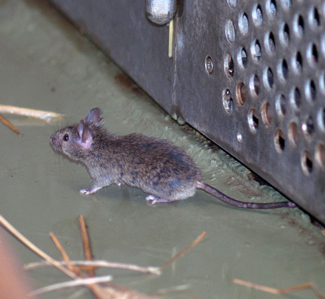Field Mice: Characteristics, Behavior, and Prevention
Introduction
What are field mice?
Field mice, also known as Apodemus sylvaticus, are small rodents that are commonly found in fields, gardens, and forests. They are characterized by their brown fur, long tails, and small, rounded ears. Field mice are known for their ability to burrow underground and create intricate tunnel systems. They are primarily herbivorous, feeding on seeds, grains, and fruits. However, they are opportunistic eaters and may also consume insects and small invertebrates. Field mice are social animals and live in colonies, often forming nests in underground burrows. These rodents are known for their agility and ability to climb trees and shrubs. To prevent field mice infestations, it is important to keep outdoor areas clean and free of food sources, seal any gaps or cracks in buildings, and remove any potential nesting sites such as piles of debris or firewood.
Importance of studying field mice
Studying field mice is of great importance in understanding the ecological balance and the impact of these small creatures on their environment. Field mice, also known as meadow voles, play a crucial role in the ecosystem as they serve as a source of food for various predators such as owls, foxes, and snakes. Additionally, field mice contribute to seed dispersal and vegetation growth through their burrowing activities. By studying their behavior and population dynamics, scientists can gain valuable insights into the overall health and stability of ecosystems. Moreover, field mice are known carriers of diseases, including hantavirus, which can pose risks to human health. Understanding the behavior and prevention methods of field mice can help mitigate the spread of diseases and protect agricultural crops. Therefore, studying field mice is essential for maintaining the ecological balance, protecting human health, and preserving biodiversity.
Overview of the article
In this article, we will provide an overview of the characteristics, behavior, and prevention of field mice. Field mice are small rodents that are commonly found in fields, gardens, and other outdoor areas. They have a distinct appearance with their round bodies, small ears, and long tails. These mice are known for their agility and quick movements, which allow them to easily navigate through various terrains. Field mice are highly adaptable and have the ability to reproduce rapidly, making them a common pest in many areas. To effectively prevent field mice infestations, it is important to understand their behavior and implement appropriate control measures. By engaging in proactive strategies such as sealing entry points, removing food sources, and maintaining cleanliness, homeowners can significantly reduce the risk of field mice infestations in their properties.
Characteristics of Field Mice
Physical appearance
Field mice are small rodents that can be found in various habitats around the world. They have a distinct physical appearance that sets them apart from other mice species. These creatures are typically small in size, measuring about 2 to 4 inches in length. They have round bodies and short legs, which allow them to navigate through narrow spaces with ease. Field mice also have fur that can vary in color, ranging from brown to gray. Their fur provides them with camouflage, helping them blend into their surroundings. One important characteristic of field mice is their ability to adapt to different environments, making them highly adaptable creatures.
Habitat and distribution
Field mice are small rodents that are found in a variety of habitats and have a wide distribution. They are commonly found in grassy fields, forests, and gardens. These mice have adapted to live in both rural and urban areas, making them a common sight in many parts of the world. Field mice are known for their ability to reproduce quickly, with females producing multiple litters each year. They are also skilled climbers and can easily navigate through vegetation and trees. Despite their small size, field mice can cause significant damage to crops and gardens, making them a nuisance for farmers and gardeners. Preventive measures such as sealing entry points and removing potential food sources can help control their population. Overall, field mice play an important role in the ecosystem, but their presence can be a challenge for those trying to protect their property.
Diet and feeding habits
Field mice primarily feed on seeds, grains, and vegetation. Their diet consists of a variety of plant materials, including grasses, leaves, and stems. They are also known to consume fruits and nuts when available. Additionally, field mice have been observed to scavenge for food in human settlements, making them adaptable to different environments. Their feeding habits are characterized by a constant search for food sources, as they need to consume a significant amount of food to sustain their energy levels. This makes them highly resourceful and opportunistic when it comes to finding food.
Behavior of Field Mice
Social structure
In the social structure of field mice, they exhibit a complex system of hierarchy and organization. These small rodents form social groups consisting of a dominant male, several females, and their offspring. The dominant male, also known as the alpha male, holds the highest rank in the group and has exclusive breeding rights. The females within the group have a strict social order based on age and dominance. The younger females are subordinate to the older, more dominant females. This social structure helps maintain order and ensures the survival and reproduction of the group. Field mice are highly social creatures, and their social interactions play a crucial role in their daily lives.
Reproduction and life cycle
Field mice reproduce rapidly and have a short life cycle. Understanding their reproduction and life cycle is crucial for effective pest removal. Field mice can breed throughout the year, with females giving birth to multiple litters of 4-7 pups. The gestation period is only about 20 days, allowing for quick population growth. These small rodents reach sexual maturity at just 6 weeks old, contributing to their rapid reproduction. To prevent infestations, it is important to identify and eliminate their nesting sites and food sources. By disrupting their life cycle and implementing effective pest control measures, such as trapping and sealing entry points, homeowners can effectively manage field mice populations and minimize damage to their property.
Activity patterns
Field mice are known for their activity patterns, which can vary depending on the season and environmental conditions. During the warmer months, field mice are more active during the night, while in colder months they tend to be more active during the day. This behavior is influenced by factors such as temperature, food availability, and predation risk. Understanding the activity patterns of field mice is important for effective prevention and control strategies. By knowing when and where they are most active, homeowners can take appropriate measures to protect their properties from infestation. Additionally, it is crucial to be aware of the similarities and differences between field mice and other rodents, such as rats. While field mice and rats may share some characteristics, they are distinct species with different behaviors and prevention methods. Therefore, it is important to accurately identify the type of rodent present in order to implement the most effective control measures. Rat fiction. When dealing with field mice infestations, it is recommended to consult with a professional pest control service to ensure proper identification and treatment.
Field Mice as Pests
Damage caused by field mice
Field mice can cause significant damage in various ways. They are known to chew through electrical wires, which can lead to power outages and potential fire hazards. Additionally, field mice can contaminate food supplies with their droppings and urine, posing health risks to humans. These rodents also have a tendency to burrow into insulation materials, causing damage to buildings and reducing their energy efficiency. It is important to take preventative measures to minimize the risks associated with field mice infestations.
Health risks associated with field mice
Field mice are small rodents that can pose health risks to humans. They are known to carry various diseases, including hantavirus and salmonellosis. These diseases can be transmitted to humans through direct contact with mice or their droppings. In addition, field mice can also contaminate food and water sources, leading to foodborne illnesses. It is important to be aware of the potential health risks associated with field mice and take preventive measures to avoid exposure. Regular cleaning and sanitization of living spaces, as well as proper storage of food, can help reduce the risk of mouse infestations and the spread of diseases.
Economic impact
Field mice can have a significant economic impact, particularly in agricultural settings. These small rodents can cause damage to crops, resulting in decreased yields and financial losses for farmers. Additionally, field mice can also damage infrastructure such as irrigation systems and storage facilities, further adding to the economic burden. It is important for farmers and landowners to be aware of the characteristics and behavior of field mice in order to implement effective prevention strategies. By understanding their habits and preferences, it becomes possible to develop targeted methods for controlling their populations and minimizing the economic impact they can have.
Prevention and Control of Field Mice
Identifying signs of infestation
Identifying signs of infestation is crucial in order to take prompt action and prevent further damage. When it comes to termites control, it is important to be vigilant and look out for certain indicators. One of the most common signs of termite infestation is the presence of mud tubes, which are used by termites as a means of transportation. These tubes are typically found along walls, foundations, and other wooden structures. Another sign to watch out for is the presence of discarded wings near windows and doors. Termites shed their wings after swarming, so finding these wings can indicate an active infestation. Additionally, wood damage such as hollowed-out or sagging wood can be a clear sign of termite activity. If you notice any of these signs, it is recommended to contact a professional pest control service for further evaluation and treatment.
Natural methods of prevention
Field mice can be a nuisance for homeowners, causing damage to property and spreading diseases. Fortunately, there are natural methods of prevention that can help keep these pesky rodents at bay. One effective method is to eliminate potential food sources by keeping the area clean and free of debris. This includes removing fallen fruits and vegetables, as well as securing garbage cans with tight-fitting lids. Another natural prevention method is to seal off any entry points into the home, such as cracks in the foundation or gaps in windows and doors. By blocking these access points, field mice are less likely to find their way inside. Additionally, using natural repellents like peppermint oil or mothballs can deter field mice from entering the property. These strong scents are known to repel rodents and can be applied in areas where mice are commonly found. By implementing these natural prevention methods, homeowners can effectively reduce the risk of a field mice infestation and protect their property.
Effective control measures
Effective control measures for field mice involve a combination of proactive strategies and targeted interventions. One of the key approaches is to eliminate potential food sources and nesting sites that attract field mice. This includes keeping outdoor areas clean and free of debris, sealing any gaps or cracks in buildings to prevent entry, and storing food in secure containers. Additionally, implementing traps and bait stations can help to reduce the mouse population. It is important to regularly monitor and maintain these control measures to ensure their effectiveness. By taking these proactive steps, individuals can effectively prevent field mouse infestations and minimize the associated risks.
Conclusion
Summary of key points
Field mice are small rodents that are commonly found in fields, gardens, and other outdoor areas. They have distinct characteristics that set them apart from other mice species. Field mice are known for their small size, typically measuring around 3-4 inches in length. They have a pointed snout, large ears, and a long tail. These mice are highly adaptable and can survive in a variety of habitats. They are primarily herbivorous, feeding on seeds, grains, and plant materials. Field mice are known for their burrowing behavior, creating intricate underground tunnels for shelter and protection. While they play a role in the ecosystem by dispersing seeds and controlling insect populations, they can also cause damage to crops and gardens. Preventing field mice infestations can be achieved through various DIY solutions. These include sealing entry points, removing food sources, and maintaining a clean environment. By implementing these preventive measures, homeowners can effectively reduce the risk of field mice infestations.
Importance of proactive prevention
Proactive prevention is of utmost importance when it comes to dealing with field mice infestations. By taking proactive measures, homeowners can significantly reduce the risk of these pesky rodents infiltrating their properties. Field mice are known for their ability to cause extensive damage, including chewing through electrical wires and contaminating food supplies. Therefore, it is crucial to implement preventive strategies such as sealing entry points, keeping the surroundings clean and tidy, and storing food in secure containers. Additionally, regular inspections and maintenance can help identify any potential issues before they escalate into full-blown infestations. By being proactive and taking these preventive measures, homeowners can ensure a safe and mouse-free environment for themselves and their families.
Future research directions
Future research directions for field mice should focus on finding effective methods to avoid infestations. One area of study could be exploring natural repellents that can be used to deter field mice from entering homes and gardens. Another direction for research could be investigating the impact of habitat modification on field mice populations. Understanding how changes in habitat, such as the removal of vegetation or the introduction of barriers, can affect the behavior and movement patterns of field mice can provide valuable insights for prevention strategies. Additionally, future research could also explore the development of innovative traps or deterrent devices that can effectively capture or repel field mice without causing harm to other wildlife or the environment.









